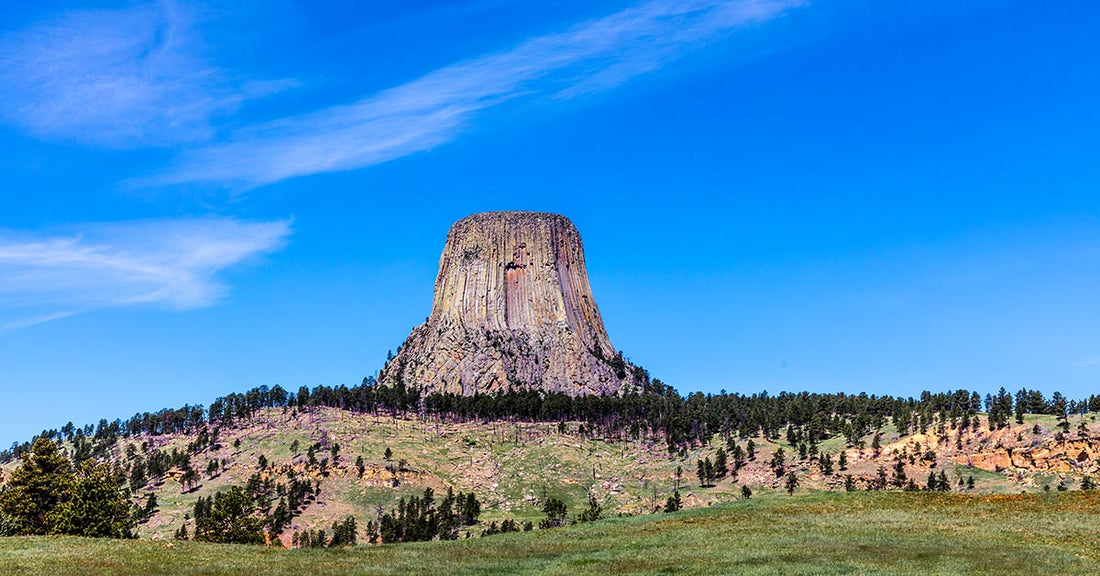Devils Tower was the first United States National Monument, established on September 24, 1906, by President Theodore Roosevelt.
An astounding geologic feature, Devils Tower protrudes out of the prairie surrounding the Black Hills. Hundreds of parallel cracks make it one of the finest crack climbing areas in North America. Devils Tower entices us to learn more, explore more and define our place in the natural and cultural world and is considered sacred by Northern Plains Indians and indigenous people.
Devils Tower (also known as Bear Lodge Butte) is a laccolithic butte composed of igneous rock in the Bear Lodge Mountains -- part of the Black Hills -- near Hulett and Sundance in Crook County, northeastern Wyoming, above the Belle Fourche River. It rises 1,267 feet above the Belle Fourche River, standing 867 feet from summit to base. The summit is 5,112 feet above sea level.
The landscape surrounding Devils Tower is composed mostly of sedimentary rocks. The oldest rocks visible in Devils Tower National Monument were laid down in a shallow sea during the mid- to late-Triassic period, 225 to 195 million years ago. This dark red sandstone and maroon siltstone, interbedded with shale, can be seen along the Belle Fourche River. Oxidation of iron minerals causes the redness of the rocks. This rock layer is known as the Spearfish Formation.
In recent years, climbing Devils Tower has increased in popularity. The first known ascent of Devils Tower by any method occurred on July 4, 1893, and is accredited to William Rogers and Willard Ripley, local ranchers in the area. The first ascent using modern climbing techniques was made by Fritz Wiessner with William P. House and Lawrence Coveney in 1937. Wiessner led almost the entire climb free, placing only a single piece of fixed gear, a piton, which he later regretted, deeming it unnecessary.
In 1941 George Hopkins parachuted onto Devils Tower, without permission, as a publicity stunt resulting from a bet. He had intended to descend by a 1,000 foot rope dropped to him after successfully landing on the butte, but the package containing the rope slid over the edge. The weather deteriorated, and a second attempt was made to drop equipment, but Hopkins deemed it unusable after the rope became snarled and frozen due to the rain and wind. Hopkins was stranded for six days, before a mountain rescue team finally reached him and brought him down.
Today, hundreds of climbers scale the sheer rock walls of Devils Tower each summer. The most common route is the Durrance Route, which was the second free route established in 1938. There are many established and documented climbing routes covering every side of the tower, ascending the various vertical cracks and columns of the rock. The difficulty of these routes range from relatively easy to some of the most challenging in the world. Climbers are required to register with a park ranger before and after attempting a climb.

Click here to see the Devils Tower National Monument poster.
Rob Decker is a photographer and graphic artist who studied under Ansel Adams in Yosemite National Park when he was just 19 years old. Now, he's creating iconic WPA-style posters for each of our National Parks. Click Here to learn more about his story and The National Park Poster Project.
Join the growing community of 75k+ National Park enthusiasts to receive insider deals and updates.

